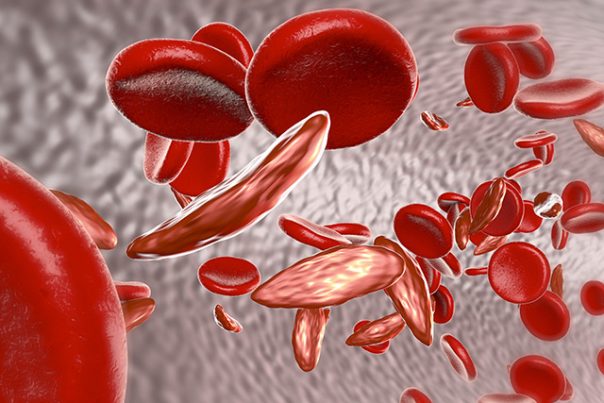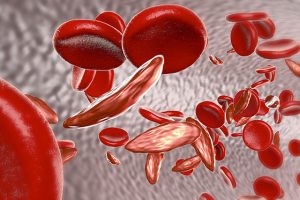
Sickle-cell anemia – causes, side effects and treatments at NaturalPedia.com
Thursday, June 21, 2018 by Michelle Simmons
http://www.naturalpedia.com/sickle-cell-anemia-causes-side-effects-and-treatments-at-naturalpedia-com.html

Sickle-cell anemia, also known as sickle cell disease, is a group of inherited red blood cell disorders caused by a problem with hemoglobin. Hemoglobin is a protein in red blood cells that transports oxygen throughout the body. In this condition, the hemoglobin forms into stiff rods within the red blood cells. This transforms the shape of the red blood cells. In sickle-cell anemia, the cells are crescent- or sickle-shaped, instead of the normal disc shape. The cause of sickle-cell anemia is a defective called sickle cell gene.
The sickle-shaped cells are not flexible and cannot change shape easily. In turn, a lot of them burst apart as they move through the blood vessels. They usually only last for 10 to 20 days, instead of the normal 90 to 120 days. The body may also have a problem in making enough new cells to replace the lost ones. As a result, there may not be enough red blood cells. The sickle-shaped cells also stick to vessel walls, which results in the blockage that slows or prevents the flow of blood. As a result, oxygen cannot reach nearby tissues. The lack of oxygen, in turn, can lead to attacks of sudden, severe pain called pain crises.

Known symptoms of sickle-cell anemia
The signs of sickle-cell anemia include fatigue, chronic pain, especially in the bones, sudden pain anywhere in the body, shortness of breath, dizziness, headache, coldness in the hands and feet, pale skin, jaundice or yellow eyes and skin, chest pain, and leg ulcers that do not heal. Severe sickle-cell anemia can damage the heart, brain, lungs, kidney, spleen, and other organs of the body, and can eventually lead to death.
Body systems harmed by sickle-cell anemia
The body systems mainly harmed by sickle-cell anemia include the cardiovascular, immune, nervous, and respiratory systems. Any other organ system in the body can be harmed by this disease. People with sickle-cell anemia are at risk for kidney failure, liver disease, gallstones, eye disease, and bone disease.
List of foods or nutrients that may prevent sickle-cell anemia
Foods that may help with sickle-cell anemia include leaf green vegetables, such as spinach, kale, collard greens, dandelion greens, and Swiss chard; meat and poultry; liver; seafood like sardines, tuna, salmon, halibut, perch, and haddock; foods rich in calcium like raw milk, yogurt, kefir, cheese, broccoli, and tofu; beans, such as kidney beans, chickpeas, soybeans, black-eyed peas, pinto beans, peas, black beans, and lima beans; and nuts and seeds, including pumpkin seeds, cashews, pistachios, hemp seeds, pine nuts, and sunflower seeds.
Treatments, management plans for sickle-cell anemia
Natural treatments for sickle-cell anemia include eating foods rich in fish oil or taking fish oil supplements, increasing zinc intake, drinking plenty of water, and getting your blood homocysteine levels checked to determine if daily folic acid supplements are enough or if you are deficient in vitamin B12. Conventional treatments for sickle-cell anemia use medication, bone marrow transplant, and blood transfusions.
Where to learn more
- Unneeded hospital blood tests giving heart attack victims life-threatening anemia
- Anemia reversed
- Naturally avoid and correct dangerous anemia
- Top Foods to Increase Red Blood Cells
- Reverse Anemia
Summary
Sickle-cell anemia is a group of inherited red blood cell disorders caused by a problem with hemoglobin.
Sickle-cell anemia causes fatigue, chronic pain, especially in the bones, sudden pain anywhere in the body, shortness of breath, dizziness, headache, coldness in the hands and feet, pale skin, jaundice or yellow eyes and skin, chest pain, and leg ulcers.
Sickle-cell anemia harms the cardiovascular, immune, nervous, and respiratory systems.
Sickle-cell anemia can be treated naturally by taking fish oil supplements, increasing zinc intake, and drinking plenty of water.
Sources include:
Tagged Under: Tags: Sickle-cell anemia





